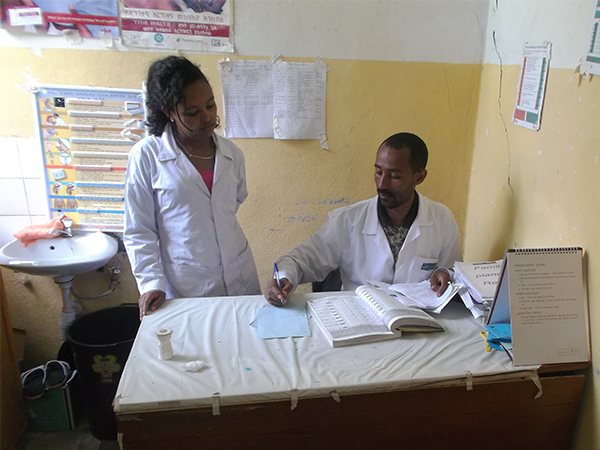
The Ethiopian Government and CapacityPlus Lead the Way in Estimating the Cost of Educating Nurses and Midwives in Africa
- Login to post comments
-

In 2011, Ethiopia reported having 29,550 nurses and 2,416 midwives1, or approximately one nurse for every 3,000 people and one midwife for every 34,000 people. In response to this shortage, the Government of Ethiopia has developed an ambitious plan to significantly increase the number of nurses and midwives in the country by 2015—to 41,009 nurses and 8,635 midwives—through the expansion of health science schools, departments, and programs.
Throughout Africa, additional investments combined with more efficient use of scarce resources is needed to scale up the production of new health workers. In 2008, the Global Task Force for Scaling up Education and Training for Health Workers estimated that around $26.4 billion of investments were required to educate and train the projected 1.5 million additional health workers needed in Africa to achieve universal health coverage. In order to inform country-level dialogue on current costs, additional investments needed, and potential economies of scale or efficiency savings, CapacityPlus developed a methodology and instruments to estimate the cost of educating a health professional.
In Ethiopia, CapacityPlus is collaborating with the Federal Ministry of Health and the Federal Ministry of Education to estimate the cost of educating nurses and midwives at two schools: the University of Gondar College of Health Sciences and Arba Minch College of Medicine and Health Sciences. This groundbreaking costing exercise is part of the US Government’s Nursing Education Partnership Initiative (NEPI), which aims to strengthen nursing and midwifery education systems in order to increase access to quality health care in sub-Saharan Africa.
This month, a team of experts in health, education, economics, and evaluation from the two ministries and CapacityPlus completed data collection at the colleges and their affiliated clinical practice facilities. Following a detailed analysis, the cost estimates produced will be used to support and inform the education institutions and their associated clinical practice facilities, as well as government agencies, in planning and managing the scale-up of nursing and midwifery education. The costing estimates can also be used to support advocacy for increased funding for nursing and midwifery education, and evidence-based decisions to inform cost-effective investments in nursing and midwifery education—critical for the Ethiopian Health Sector Development Program to reach its goal of nearly doubling the number of nurses and quadrupling the number of midwives in Ethiopia.
Following the data collection site visits, Sister Azeb Admassu, Federal Ministry of Health chair of the NEPI/Ethiopia Core Group, said, “We really appreciate and are happy about the international and national study team’s excellent job, and we expect to use the full output of the study.”
The costing estimates will support the Ethiopian Government’s scale up efforts by providing an estimate of:
- The current cost to the educational institution and its associated clinical practice facilities of producing a nursing or midwifery graduate
- The current resource constraints, subsidies, and savings associated with scaling up the quantity and/or improving the quality of graduates
- The costs of different interventions to increase the quantity of the graduates and/or improve the quality of their education, taking into account existing constraints, and the predicted new cost of producing a nursing or midwifery graduate if those interventions are implemented.
The costing exercise applies an Excel-based costing model and data collection instruments, developed by CapacityPlus, to systematically analyze preservice education costing data.
Next steps include drafting a final report, and verification of the findings with the Ethiopian Government and study schools. Stay tuned for an announcement of the findings, and to learn about the recent launch of costing study activities in the Democratic Republic of Congo!
Help CapacityPlus spread the word about strengthening the health workforce. Follow us on Twitter and like us on Facebook.
1Ethiopia Federal Ministry of Health. 2010/2011. Health and Health Related Indicators.
Related items:
Photo by Elias Asfaw (Ethiopian health professionals review patient intake ledger)


